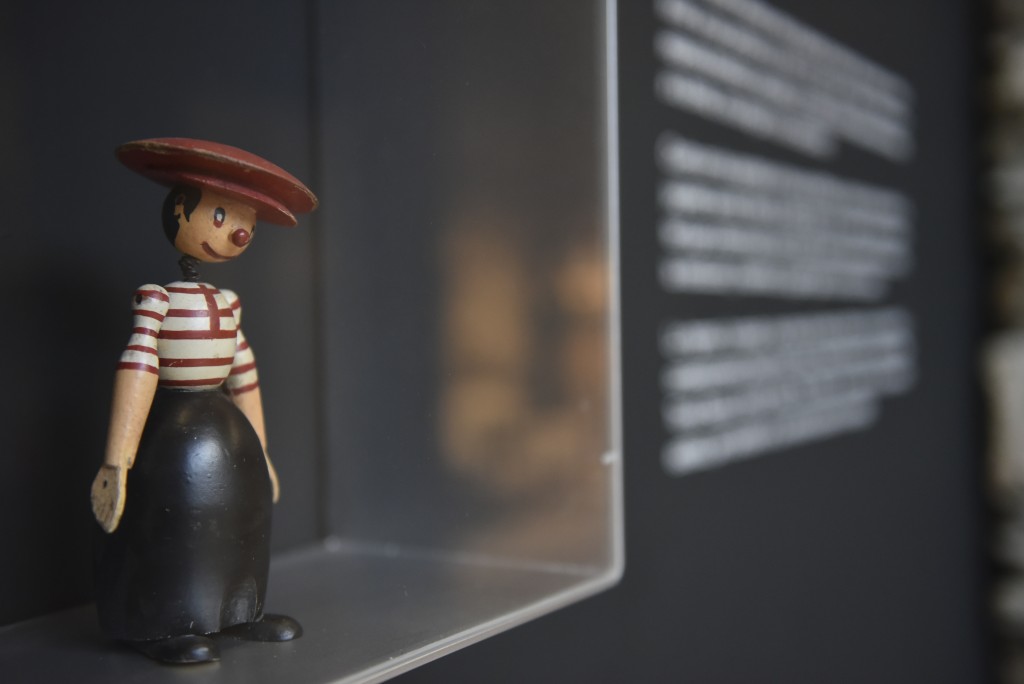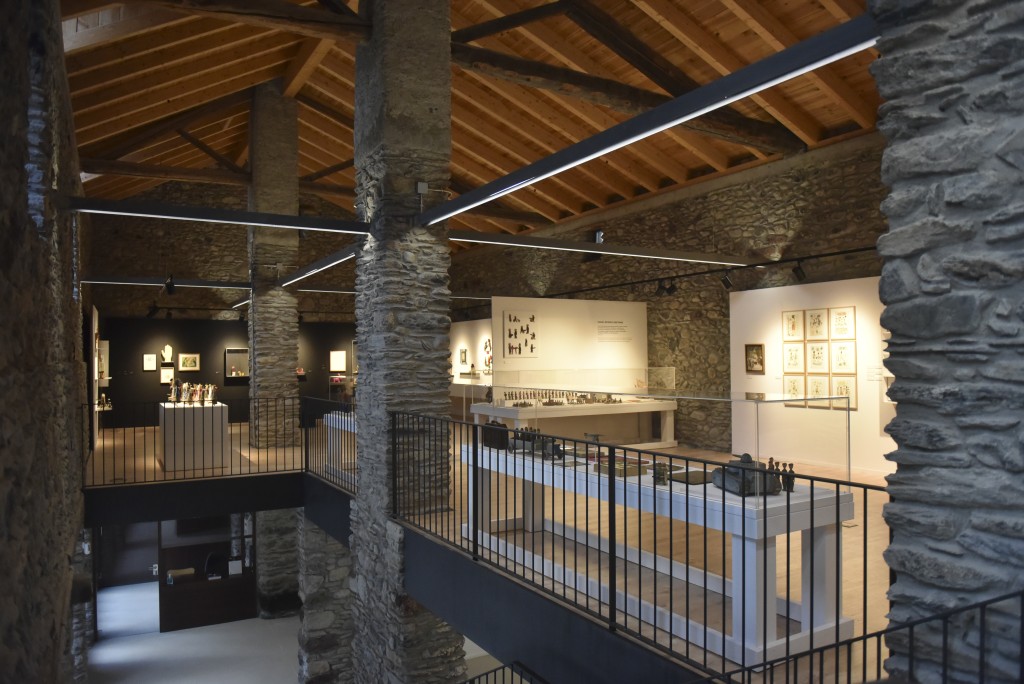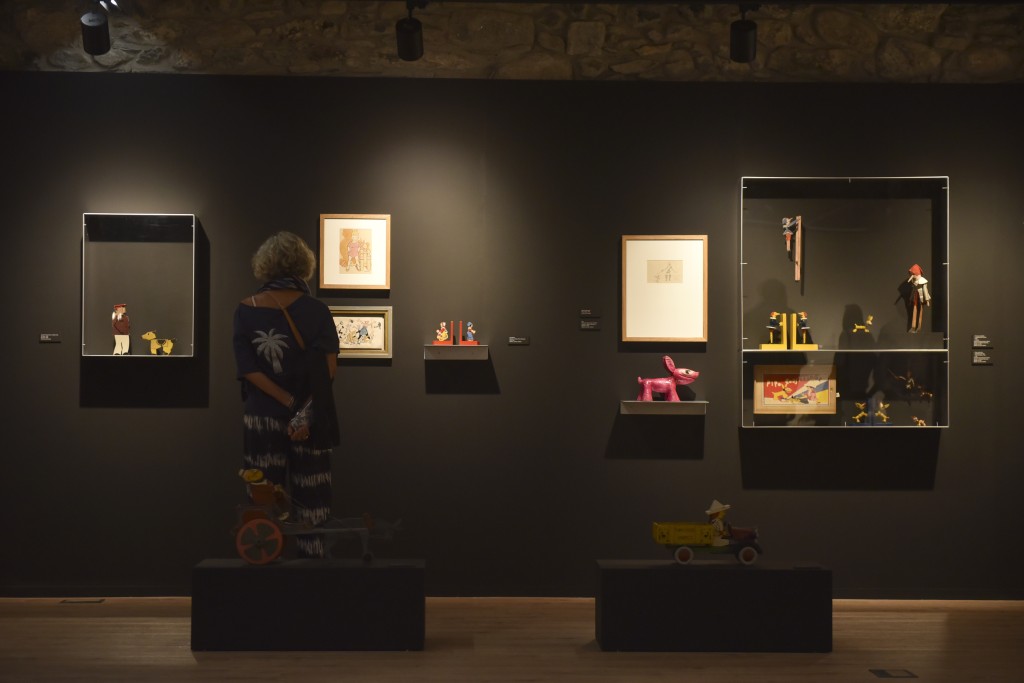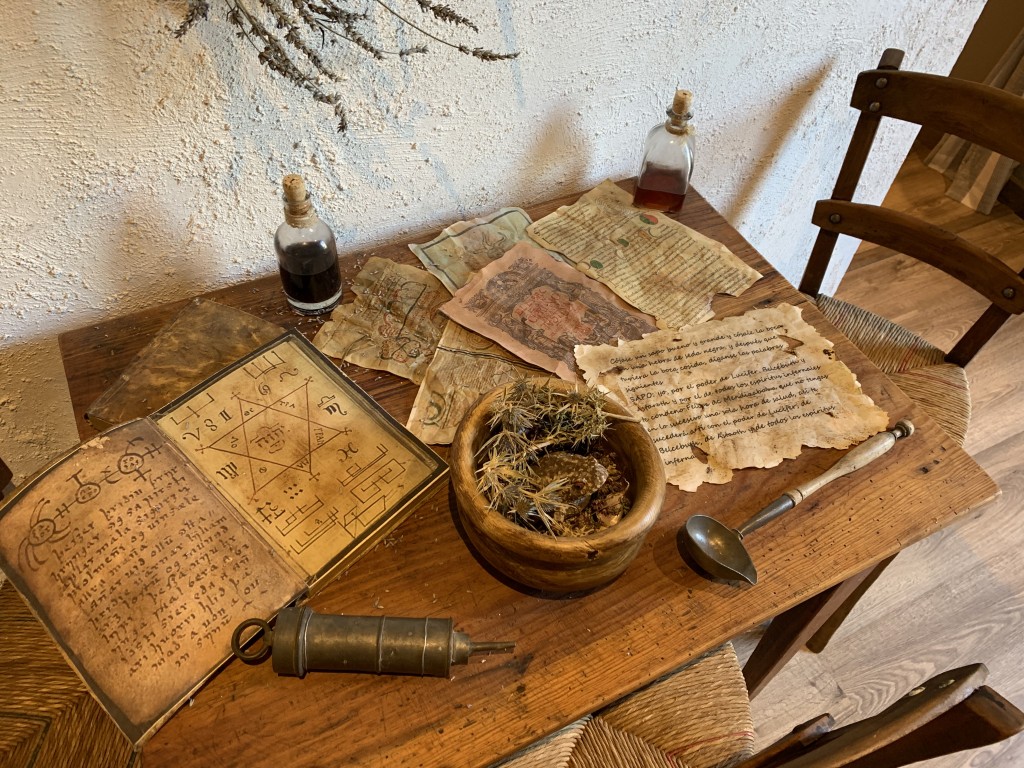The museum spaces are important elements for learning, places for experiencing the connexion and interaction with the tangible and intangible heritage that they hold.

Naïve art centre
The Naïve Art Centre is a collection of around 500 objects and artworks dating back from the Middle Ages till the present time. It shows a childish, carefree, innocent and simple visual language that entices us to think about the innocence, the creativity, the need to play, the freedom and the confidence that the human being externalises during the creative action, on the fringe of established rules.
Borda Albar building, in front of Condes de la Ribargorza palace in Benasque, houses the exhibition La mirada ingenua del juego, an exhibition of artworks and objects related to game and party that is part of Javier Santos Llosa personal collection.

Children drawings, fairground rides or puppets, party and funfair objects mainly anonymous and modern art creations with authorship, such as Pipo y Pipa, are part of this exhibition that makes up the lost childhood.
In addition, there is a section devoted to more personal toys classified into four areas:
• Toys that every child has ever dreamed to have
• Toys used to play adult roles
• Educational and instructive toys
• The toy linked to the creative freedom
All of them share space with renowned artist artworks (from the avant-garde to the contemporariness) such as Joaquín Torres García, Pere Torné Esquiuis, Rafael Barradas, Salvador Bartolozzi, Nogués, Ángeles Santos, José María Gorris or Flavio Morais among others, and also childish artworks that express the irony and the satire.
Location: Borda Albar, Benasque.
Schedule: Saturday and Sunday from 18:00 to 20:00 h. Extended schedule during bank holidays, long weekends, Christmas, summer and important dates.
More information: Benasque Tourist Office, telephone number 974 55 12 89.


Laspaúles Interpretative Centre of the bruyxas
During the Middles Ages, some women went beyond the imposed bounds for them, working as peasants and also as teachers of several trades linked mainly to medicine. In response to this change, a misogyny opinion trend started to take shape during the XIII and XIV centuries, originating the pursuit and the execution in all Europe of all the women who did not follow the established standards.
Between the 18th February and the 29th April 1592, twenty-four women from the Consel de Laspauls were charged with witchcraft and were executed on the gallows.
This space, located next to the church, studies in more detail the trail and execution history of the bruyxas of the Consel de Laspauls with an interpretative tour focused in the practices and the torture tools used during the same period of this well-known episode.
Location: c/ Jaciento Pere 4, next to the church. Laspaúles.
More information: Laspaúles council, telephone number 974 55 31 41.
